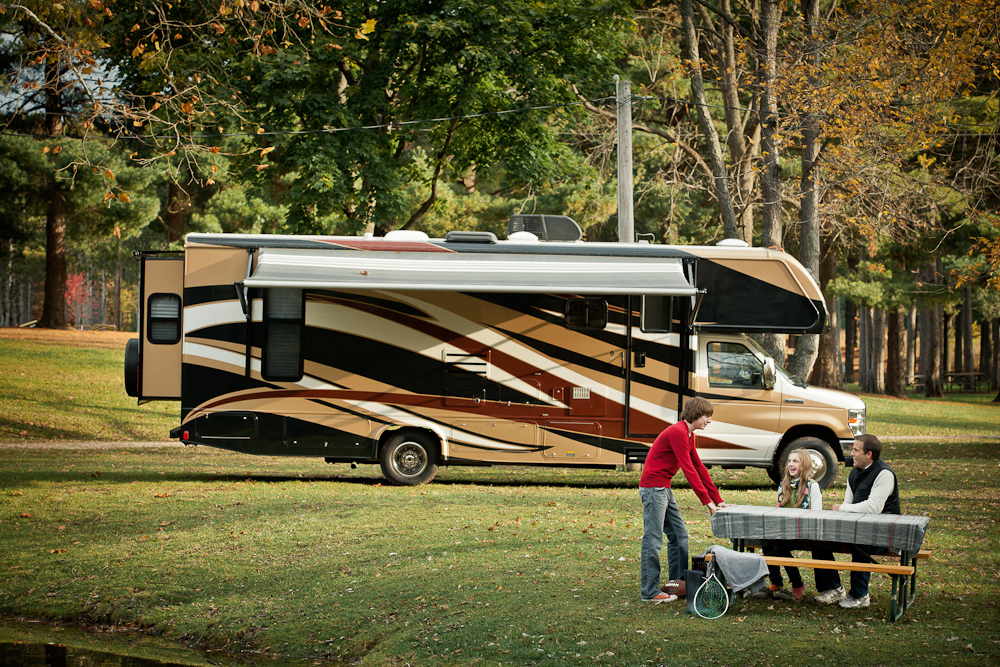When it comes to RVing, planning is essential – including organizing a routine to follow prior to departing your stationary home or from a campsite. What you need to do will vary some depending on the type of RV you have, but a Pre-Departure Checklist would look something like this. (Keep in mind throughout packing and refilling fluids the impact you could have on your RV’s weight.)
You should keep a checklist like this with you to use every time you are getting ready to leave with an RV. If camping is a family affair, expect each member of the family to carry out certain responsibilities to help close up the RV and get ready to leave.
Before Leaving on a Trip…
- Confirm reservation at your chosen destination.
- Check the weather conditions for your expected date of departure. If it’ll take more than a day to reach your destination, check the anticipated weather across your route. If it’s not looking good, you may need to change your reservation.
- Change postal mail forwarding instructions if you’ll be gone for an extended period of time (hold or send to a new location).
- Prepare maps and directions.
- Wash and pack clothing.
- Purchase groceries and supplies, and make sure they are securely put away and won’t move during transit. If you don’t have built-in cabinets, or very few, a tote specifically for your groceries will work to hold the food. Don’t buy too many groceries; do some shopping when you get there.
- Check propane levels and fill as needed.
- Check generator fuel levels and fill as needed.
- Check batteries for flashlights, radios, carbon monoxide detectors, and smoke detectors.
- Check motor home fuel levels (oil, transmission, brake, coolant, power steering). If you will be towing an RV, do the same thing for your tow vehicle.
- For motorhomes, close the gray tank valves to collect water for flushing sewer hose after dumping the black tank.
- Fill the fresh water tank to the desired level.
At Departure, from home or from the campsite…
- Check tire pressure, regardless of whether it’s a motorhome, a trailer, or a tow vehicle.
- Check wheel lug nut torque. Again, regardless of the type of vehicle or RV.
- Pick up the mail.
- Fill drinking water containers (if applicable).
- Lower any roof-mounted antennas or dishes.
- Collect and store all outdoor items (i.e., chairs, mats, grills, totes, suitcases, awnings, steps, decks etc.).
- Secure items inside cabinets, in the shower (if you have one), the kitchen.
- Latch all doors – shower, closet, refrigerator, cabinets.
- Close and latch stove top and oven door.
- Secure TVs and sliding TV trays (if you have them).
- Shut off all lights.
- Close all doors.
- Close all windows and place blinds or curtains in a travel-ready position (important if you have a slide-out or pop-up camper).
- Secure all items in and near a driving compartment to ensure they don’t fall and distract or injure the driver or passengers.
- Close roof vents and windows.
- Stowe and secure awnings.
- Check any slide tops for debris and water – and clean them out.
- Move in any slides and lock the slide mechanism, if available.
- Empty black and gray tanks.
- Close tank valves.
- Add any treatment chemicals to the black tank.
- Disconnect cables and adapters, such as for a TV.
- Disconnect the sewer hose, and store.
- Disconnect the water hose, and store.
- Disconnect the electricity cable, and store.
- Confirm that the fridge is running on appropriate power or turned off.
- Turn off all propane appliances (i.e., furnace).
- Shut off propane bottle valves, unless it’s necessary for motor home operations.
- Throw away trash.
- Secure anything being carried on the outside of the RV or tow vehicle.
- Raise or remove stabilizing jacks.
- Raise leveling jacks.
- Collect and store leveling blocks.
- Remove wheel chocks.
- Lock all external doors and panels.
- If towing, hitch the trailer to the tow vehicle or toad to the motorhome.
- Check lights, turn signals, and brake functionality (brake line should be attached).
- Walk around one last time, checking for any missed items or to pick up remaining debris. The site should be as clean as when you found it – or better!
- Check and adjust mirrors.
- Check all safety pins.
- Make sure everyone, pets included, is in the RV, buckled up and safe.
- Check out of the campground, RV park, or RV resort if you haven’t already done so at this point.
- Fuel up.
- Head to the open road!

